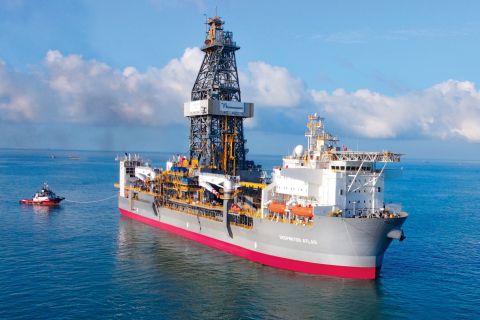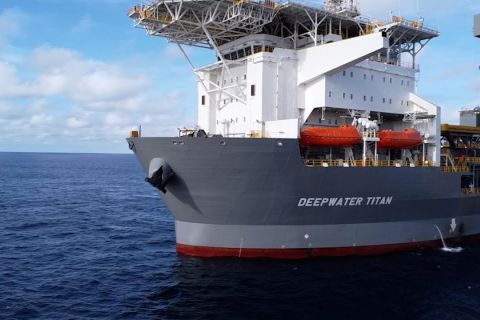The Permian’s stacked pay potential has seen companies recently snatching up acreage even at high prices to get to the promising formations. The question is: Will that potential remain untapped as operators figure out how low oil prices will affect their bottom lines, or will the basin become a focus for companies as they ride out the storm?
The Permian, which covers West Texas and southeastern New Mexico, contains two main sub-basins—Midland and Delaware. Covering about 386 km (240 miles) north to south and 145 km (90 miles) in width, the Midland Basin is the largest basin in the Permian, though not as deep as the Delaware Basin. It subsided at a different rate from east to west; it deepens to the west and southwest. The Midland Basin contains plays such as the Spraberry-Dean, Wolfberry, Cline and Wolffork plays as well as parts of the Wolfcamp.
Top acreage holders in the Midland Basin include Pioneer/Sinochem, Apache Corp., Chesapeake, Devon/Sumitomo and Oxy. Acquisition and divestiture activity has been significant, according to the “North American Shale Quarterly,” particularly in the Wolfcamp. In 2014, American Energy Partners LP acquired 63,000 net acres, primarily in Reagan and Irion counties. EQT Resources gained 73,000 net acres in Glasscock and Sterling counties from Range Resources, which had been drilling for Cline in that position. Laredo Petroleum acquired 9,741 net acres in the basin, Diamondback Energy acquired 13,136 net acres and Exxon Mobil Corp.’s wholly owned subsidiary XTO Energy Inc. received 25,000 net acres in the Midland Basin in a trade. And that’s just to name a few.
The stacked potential of the sub-basin makes it an attractive area for shale players, but the drop in oil prices may slow activity. According to DrillingInfo, an industry data firm, permits for new wells dropped 22% in the Permian Basin in October. This is a pullback from a significant acceleration in U.S. shale drilling activity over the last two years, but it’s yet to be seen just how much of a production slowdown might be caused by the slide in prices.
Permian upside
Permian players are stock full of drilling opportunities. Companies have an inventory of 25 years on average due to the stacked pay nature of the play, said Mike Kelly, managing director and head of E&P research, Global Hunter Securities LLC, at Hart Energy’s Executive Oil Conference (EOC) in November 2014.
The allure of the basin is leading several public players to shed noncore assets and become more Permian pure play, he said.
In 2014, Energen Co. sold off its utilities segment and put its dry gas assets on the market in San Juan to get more Permian leverage. Laredo Petroleum Inc. sold its Midcontinent assets to EnerVest Ltd. last year.
Pioneer Natural Resources Co. has made several divestitures recently in the Barnett, Hugoton and Alaska and may ultimately exit the Eagle Ford because it wants to put on more Permian weight, he said.
Kelly said acreage prices in the Permian can be justified due to two key factors—stacked pay potential and enhanced completions.
“We think that as Wall Street gets more comfortable with this and producers really prove that there’s no cannibalization between zones, and you’ve got a zone that really is a separate reservoir relative to what’s below and above it, Wall Street will give more credit in terms of a per-acre basis,” he said.
Eyeing the price and activity environment for E&Ps, Jordan Marye, partner with Denham Capital Partners, said the fall in prices could shake out as more M&A action. “Reshuffling yields opportunity,” he said.
He referenced a study from ITG that indicated unconventional technology has whetted the industry’s thirst for capital: An estimated $2.9 trillion in drilling and completions capex is needed to drill more than 500,000 remaining U.S. locations. “The capital and operational intensity of the current environment has caused a major rationalization of ‘core’ vs. ‘noncore’ assets among producers large and small,” he said.
Responding to industry concern about commodity prices, Marye said Denham’s job isn’t to bet on commodity prices. Rather, he said, the firm makes money on investments having economic rates of production and cash flow. By investing in assets that are good-quality, one can be insulated from volatility in oil prices, he said. Such good-quality assets are “lower than the cost curve and advantaged on the cost curve,” he said.
Denham looks for opportunities that have low leverage where, when times are good, companies can thrive, but when times are tougher, companies can pivot and cover themselves. It’s also important to have access to infrastructure, he emphasized. “You get paid at the wellhead, not at the index.
“This industry is good at making stuff,” he said. “Over the long term, to be successful you have to invest in asset metrics. Prices will take care of themselves.”
Well services, stimulation
As part of Hart Energy’s Market Intelligence program, researchers completed interviews with eight industry participants in the workover/well service segment in the Permian Basin in December 2014. Participants included two oil and gas operators and six managers with well service companies.
Lower oil prices are causing concern in the Permian Basin, and well service managers are already seeing demand slow down and prices under pressure. Five of the eight respondents said that demand had shrunk quarter-to-quarter and three said that demand is steady, but everyone has grown cautious.
All respondents said there are enough rigs to meet demand in the Permian Basin; however, most are concerned that lower oil prices will start to affect demand and rig availability and rates will weaken. More than half of the respondents said that demand had shrunk quarter-to-quarter because of lower oil prices. In addition, rates were under pressure for six of the eight respondents. All respondents said if oil prices remain low in the next six months that demand would slow and prices would drop. However, three of the eight respondents said they would continue to work steadily because some operators would not stop work completely.
Hart Energy researchers also completed interviews with nine industry participants in the well stimulation/pressure pumping service segment in the Permian Basin area. Participants included two consultants working for oil and gas operators, one coiled tubing (CT) completions specialist, one frack equipment supplier, two oil and gas operators and three managers or salespersons with well service companies. Interviews were conducted during the second week of December 2014.
Five of these nine well stimulation respondents reported that demand looks stable for first-quarter 2015 in the Permian Basin due to commitments made before the fall in the price of oil. However, four respondents reported demand has already slowed, and all agreed that demand will follow the price of oil up or down in 2015. Seven of nine respondents reported that supply is sufficient, but two reported oversupply has become an issue.
Respondents working mainly in the Wolfcamp Formation in the Permian Basin reported that average vertical depth is in a range of 2,133 m to 2,743 m (7,000 ft to 9,000 ft) and horizontal laterals average 2,286 m (7,500 ft). There is a growing use of a newer style sliding sleeve CT frack in the Permian Basin that many operators are now trying in order to test for production efficiency.
The average per-stage price is $76,000 for plug-and-perf (PNP) fracks with the large sand volumes. Average per-stage price for sliding sleeve stages is $43,000, but each lateral has two to three times the number of stages compared to a PNP. If production data continue to show 20% efficiency gains with this system, sleeves will continue to grow in popularity.
All respondents expect prices to decrease during the first quarter. In addition, all respondents expect prices to continue to adjust based on how the oil price fares.
Increasing water recycling, conservation
Water is a major concern in the Permian Basin. Drilling requires a lot of water, and not a lot is available. Various companies are trying to figure out ways to recycle water along with using produced and flowback water.
The Permian is a leading innovator in how to reuse and, specifically, how to treat water, said Clane LaCrosse, founder, president and CEO of Bosque Systems LLC. “People from all over the world are looking at this area to see how they can reuse water globally,” LaCrosse said.
At the EOC, a roundtable discussion examined challenges and opportunities that exist. Panelists discussed ways to reduce the use of freshwater and increase water recycling, reuse and conservation. The panelists, along with LaCrosse, were Rob McClain, director of project development at Select Energy Services, and Brent Halldorson, COO of Aqua-Pure/Fountain Quail.
“We really approached the oil field with the logistics question: How can we minimize costs? That’s one of the big challenges,” said LaCrosse, who founded Bosque Systems in 2007 after observing a need for additional saltwater disposal capacity in the Barnett Shale. “Fracks in [the Permian] have gone from 80,000 barrels of water to 300,000 barrels [of frack water] per day, so it’s a huge logistics question. That’s really what we’ve addressed as a company.”
LaCrosse said there’s been “a tremendous growth” for the company. Bosque Systems handled about 33 MMbbl of water last month, and about half of that is in the Permian. The company offers different solutions that it can apply, depending on what the operator is trying to accomplish, LaCrosse said. Bosque’s goal during the next 12 months is getting the price of water on the frontside down as low as possible.
“What I’m really excited about, especially here in the Permian, is that water recycling is now mainstream,” Halldorson said. The Permian is leading the way in water recycling in the industry, he said.
“New Railroad Commission rules allow us to take produced water from company A, recycle it and use it for company B. You cannot do that anywhere else in the nation. I think Texas has the best recycling rules,” he said. “Now we’re seeing produced water being viewed in many places as an asset instead of a liability.”
McClain said recycling is growing and that there is plenty of opportunity in the Permian for his company. “I think what we see is that operators are getting smarter about the way they think about water,” he said.
‘Reliability has increased’
How much recycling is taking place in the Permian Basin right now? “You can always do more,” LaCrosse said. “I think you have to make the economic equation work.”
Bosque is starting four pilots this month and doing full-blended jobs. The company runs about 50 frack crews in the U.S., and 85% use some blended, he said. “It’s not one or the other. It’s kind of a paradigm of all the way from straight freshwater to complete reuse, and when you’re talking about 200,000- to 300,000-barrel fracks, you start blending water. Its effects relative to fresh are so normal, and the cost savings are so great.
“The economics are there … If we can’t do it for the same cost or lower, you shouldn’t be talking to me. We’re having the wrong conversation. It’s a matter of moving them from blending 5% to 15% to 35%. You just keep moving down that until you get to a point where it’s on target. Again, it’s a logistics equation.”
Halldorson added, “We keep pushing the boundaries, so the price of recycling has dropped, reliability has increased, and at the same time the frack companies have been able to make use of more and more compromised water and more and more saline water.”
The focus is no longer the cost of recycling, and the reason recycling isn’t being used is more of a logistics issue, he said. “You can recycle and reuse your water, [but] do you have containment and transfer in place to make use of it where you need it? That’s the challenge.”
Companies such as Select are integrating containment and transfer systems to provide solutions, McClain said. “The other thing I’m seeing in the Permian is that a lot of the producers—especially the larger producers—are starting to interconnect their own pit networks and put all of that infrastructure in. That’s huge for me as a recycler because now I don’t have to get that water to your frack site. We need to get it into the nearest pit, and they’re all interconnected, so I’m going to put it into a pit and it may end up getting used 10 miles away.”
There is a lot of brine water in the Permian Basin. When asked if this a good source of water in terms of making it something the operators can use in their wells, Halldorson responded, “We’re seeing [brine water] play a big part in water management, and frack companies are able to use that saline water. I caution people when they’re planning on using a lot of brackish water and Santa Rosa-type water. Ownership will be an issue going forward. I think people are looking at who owns brackish water; it’s a bit of a gray area right now. We also need to know how these aquifers interrelate with each other, and if we start drawing really heavily on the saline aquifer, will that impact nearby freshwater aquifers? That’s a big question we need to understand,” Halldorson said. “So I always caution people to make sure they study the hydrogeology to the extent they can.”
Recommended Reading
E&P Highlights: April 8, 2024
2024-04-08 - Here’s a roundup of the latest E&P headlines, including new contract awards and a product launch.
TotalEnergies Starts Production at Akpo West Offshore Nigeria
2024-02-07 - Subsea tieback expected to add 14,000 bbl/d of condensate by mid-year, and up to 4 MMcm/d of gas by 2028.
E&P Highlights: Feb. 26, 2024
2024-02-26 - Here’s a roundup of the latest E&P headlines, including interest in some projects changing hands and new contract awards.
Rystad: More Deepwater Wells to be Drilled in 2024
2024-02-29 - Upstream majors dive into deeper and frontier waters while exploration budgets for 2024 remain flat.
After 4Q Struggles, Transocean’s Upcycle Prediction Looks to Pay Off
2024-02-21 - As Transocean executives predicted during third-quarter earnings, the company is in the middle of an upcycle, with day rates and revenues reaching new heights.





